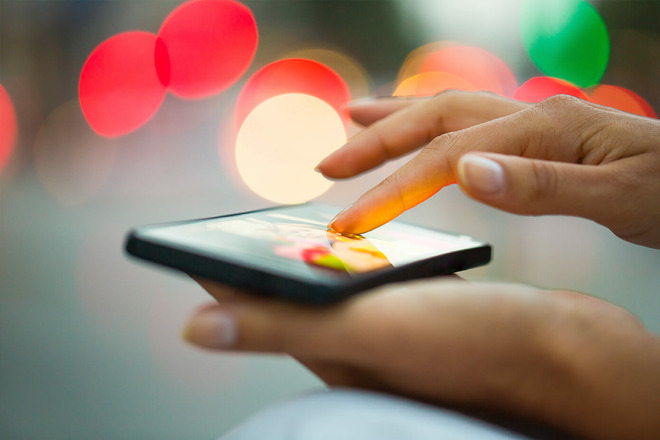Future iPhone Face ID could have infrared sensor that works through OLED screens
Potentially pushing Apple further towards eliminating the notch on iPhones, sensor creator AMS has debuted new technology that can detect ambient light and human proximity from behind an OLED screen.

The sensor, the TCS3701, can pick up both visible and infrared light, AMS said. The key development is the ability to ignore light produced by the OLED panel, registering only outside sources.
Ambient light sensing is one of the reasons for the "notch" on the iPhone X, XS, and XR. Without an ambient sensor the phones would be unable to automatically adjust brightness or white balance, or shut off the display when it's held to a person's ear.
When the iPhone X launched in 2017 the notch was one of its biggest criticisms, given that it interrupts what is otherwise an edge-to-edge OLED panel. The core reason for the design choice was the TrueDepth camera used for Face ID and animoji, which has carried over to the iPhone XS and XR.
Some companies, like Samsung, have actively striven against incorporating notches, while others have embraced or even deliberately imitated Apple's concept. The possibility opened up with improvements in OLED manufacturing.
Many iPhone owners have got used to the notch, but it's speculated that Apple's 2019 iPhones could adopt a "hole punch" for their front-facing cameras, maximizing usable screen area. A hidden ambient sensor could make that idea more practical.

The sensor, the TCS3701, can pick up both visible and infrared light, AMS said. The key development is the ability to ignore light produced by the OLED panel, registering only outside sources.
Ambient light sensing is one of the reasons for the "notch" on the iPhone X, XS, and XR. Without an ambient sensor the phones would be unable to automatically adjust brightness or white balance, or shut off the display when it's held to a person's ear.
When the iPhone X launched in 2017 the notch was one of its biggest criticisms, given that it interrupts what is otherwise an edge-to-edge OLED panel. The core reason for the design choice was the TrueDepth camera used for Face ID and animoji, which has carried over to the iPhone XS and XR.
Some companies, like Samsung, have actively striven against incorporating notches, while others have embraced or even deliberately imitated Apple's concept. The possibility opened up with improvements in OLED manufacturing.
Many iPhone owners have got used to the notch, but it's speculated that Apple's 2019 iPhones could adopt a "hole punch" for their front-facing cameras, maximizing usable screen area. A hidden ambient sensor could make that idea more practical.

Comments
Will it be nice to eventually have it gone? Sure, of course. But it's hardly a big deal.
I hope not. Hole punches are ugly, and wasteful. Also, there's the matter of the speaker. I don't think Apple will produce a phone with a slot cut into the screen to house the cameras and speaker. Personally, I'd rather they had a small bezel there to house all that, but given "everybody" wanted bezel-less phones, the notch is a reasonable implementation.
In many ways, having a cut-out in the screen would create a virtual notch, anyway. Images that go over the cut-out would have a hole in them. Watching video would be confined to the area of the screen bounded on one side by the hole, the same way the notch does now. Essentially, you'd end up with the equivalent of the Touch Bar on an iPhone, since you'd probably end up treating the area above the cut-out as a separate screen to the area below it.
Goes to show how spoilt we are that a despite having a bezel-less, full screen, slab of glass device in our hands today, people still bitch and moan because of a small area required for cameras and sensors. How did these people get by with any phone or iPod pre-2018?
I have a hard hard time getting the issue, like with all the still “headphone jack” hand wringing (especially as there, heck the lightning port IS a headphone port.
And FaceID is completely addictive, I’d never go back especially for a notch I don’t notice! With my glasses or not, baseball cap, in the dark at night or not, even with my Oakley dark prescription sunglasses and ball cap: never fails.
The one sutuation to sometimes give it trouble is full harsh sunlight from the side while I’m parked in my truck getting set up to connect to my in truck system. Light reflecting off my eyeglasses too much? IDK.